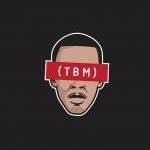-
Posts
347 -
Joined
-
Last visited
Reputation Activity
-
 Parker got a reaction from John Matthews in New L-Mount Lumix (cinema?) Camera
Parker got a reaction from John Matthews in New L-Mount Lumix (cinema?) Camera
@MrSMWYeah I agree, I pre-ordered the S1 right as it came out, did the same thing with the S5iiX, have shot them together on pretty much every job since, across a huge variety of use cases, never seen any kind of real, noticeable difference between them, at all. Ditto with the original S5, which I have also had with those other two cams on many dozens if not hundreds of shoots over the past several years.
I think people just always find something to complain about. Especially when it comes to super arbitrary, impossible-to-prove image-quality mumbo jumbo, i.e. "motion cadence," "video look," "micro-contrast" or "3D-Pop," etc.
-
 Parker got a reaction from ArashM in New L-Mount Lumix (cinema?) Camera
Parker got a reaction from ArashM in New L-Mount Lumix (cinema?) Camera
@MrSMWYeah I agree, I pre-ordered the S1 right as it came out, did the same thing with the S5iiX, have shot them together on pretty much every job since, across a huge variety of use cases, never seen any kind of real, noticeable difference between them, at all. Ditto with the original S5, which I have also had with those other two cams on many dozens if not hundreds of shoots over the past several years.
I think people just always find something to complain about. Especially when it comes to super arbitrary, impossible-to-prove image-quality mumbo jumbo, i.e. "motion cadence," "video look," "micro-contrast" or "3D-Pop," etc.
-
 Parker got a reaction from Davide DB in New L-Mount Lumix (cinema?) Camera
Parker got a reaction from Davide DB in New L-Mount Lumix (cinema?) Camera
@MrSMWYeah I agree, I pre-ordered the S1 right as it came out, did the same thing with the S5iiX, have shot them together on pretty much every job since, across a huge variety of use cases, never seen any kind of real, noticeable difference between them, at all. Ditto with the original S5, which I have also had with those other two cams on many dozens if not hundreds of shoots over the past several years.
I think people just always find something to complain about. Especially when it comes to super arbitrary, impossible-to-prove image-quality mumbo jumbo, i.e. "motion cadence," "video look," "micro-contrast" or "3D-Pop," etc.
-
 Parker got a reaction from MrSMW in New L-Mount Lumix (cinema?) Camera
Parker got a reaction from MrSMW in New L-Mount Lumix (cinema?) Camera
@MrSMWYeah I agree, I pre-ordered the S1 right as it came out, did the same thing with the S5iiX, have shot them together on pretty much every job since, across a huge variety of use cases, never seen any kind of real, noticeable difference between them, at all. Ditto with the original S5, which I have also had with those other two cams on many dozens if not hundreds of shoots over the past several years.
I think people just always find something to complain about. Especially when it comes to super arbitrary, impossible-to-prove image-quality mumbo jumbo, i.e. "motion cadence," "video look," "micro-contrast" or "3D-Pop," etc.
-
 Parker reacted to Andrew Reid in Anyone with a Panasonic S5 II or S9 interested in testing my in-cam ARRI compatible LOG C3 profile?
Parker reacted to Andrew Reid in Anyone with a Panasonic S5 II or S9 interested in testing my in-cam ARRI compatible LOG C3 profile?
It is ready.
Everyone who replied here so far, will get it free and I'll be sending you all a direct message and email this week.
-
 Parker got a reaction from Juank in Is Panasonic rethinking high-end full frame mirrorless line-up?
Parker got a reaction from Juank in Is Panasonic rethinking high-end full frame mirrorless line-up?
Word on the street (heard a bit cryptically this week from a Panasonic rep) is to wait for a February 2025 announcement, most likely a new S-series cam 🤞🏻🤞🏻
Hopefully we won't be disappointed!
-
 Parker got a reaction from PannySVHS in Anyone with a Panasonic S5 II or S9 interested in testing my in-cam ARRI compatible LOG C3 profile?
Parker got a reaction from PannySVHS in Anyone with a Panasonic S5 II or S9 interested in testing my in-cam ARRI compatible LOG C3 profile?
I'd love to test it out on s5iix, be interesting to compare it to the emotive color lut as well.
-
 Parker got a reaction from John Matthews in Panasonic S5 II (What does Panasonic have up their sleeve?)
Parker got a reaction from John Matthews in Panasonic S5 II (What does Panasonic have up their sleeve?)
@John Matthews While I'm sure you could just put a bit of gaff tape over the contacts and manually program in the focal length you want for IBIS have the camera treat it like a manual lens and get the high stabilization mode, it probably wouldn't be ideal because then you'd also lose aperture control, AF, and most likely the ability to even focus, as I'm assuming it's an electronic/focus-by-wire lens and would need the contacts active to be able to function.
-
 Parker got a reaction from kye in Panasonic S5 II (What does Panasonic have up their sleeve?)
Parker got a reaction from kye in Panasonic S5 II (What does Panasonic have up their sleeve?)
@John Matthews While I'm sure you could just put a bit of gaff tape over the contacts and manually program in the focal length you want for IBIS have the camera treat it like a manual lens and get the high stabilization mode, it probably wouldn't be ideal because then you'd also lose aperture control, AF, and most likely the ability to even focus, as I'm assuming it's an electronic/focus-by-wire lens and would need the contacts active to be able to function.
-
 Parker got a reaction from kye in Panasonic S5 II (What does Panasonic have up their sleeve?)
Parker got a reaction from kye in Panasonic S5 II (What does Panasonic have up their sleeve?)
I used the new high e-stab on my s5iix on a shoot last week to test it out, pretty dang smooth! Although the crop is quite significant, I was running around getting very gimbal-like footage on the venerable sigma 18-35, but at 18mm, plus the crop in 60p, still quite tight, so I may use this more with the Sigma 14-24. Great new tool in the toolbox of this already amazing camera though.
-
 Parker got a reaction from John Matthews in Panasonic S5 II (What does Panasonic have up their sleeve?)
Parker got a reaction from John Matthews in Panasonic S5 II (What does Panasonic have up their sleeve?)
I used the new high e-stab on my s5iix on a shoot last week to test it out, pretty dang smooth! Although the crop is quite significant, I was running around getting very gimbal-like footage on the venerable sigma 18-35, but at 18mm, plus the crop in 60p, still quite tight, so I may use this more with the Sigma 14-24. Great new tool in the toolbox of this already amazing camera though.
-
 Parker got a reaction from PPNS in Best bang for buck lighting
Parker got a reaction from PPNS in Best bang for buck lighting
Bigger, heavier duty fixtures are probably outside the budget you're willing to spend, but I'll just offer the devil's advocate view to the other posters here, that you can never, ever have too bright of a light.
I generally use a Nanlux evoke 1200 as my keylight, usually shooting through a 4x4 frame of magic cloth, and I am frequently at 100% power and needing more output, sometimes ganging it with an additional 1200B, 600D, Prolycht 675, whatever I have available.
Granted, I am usually trying to hold some exposure through windows and the like, and I prefer to light with big, soft, beautiful keys, but still. You'll never regret having more power at your disposal. That will just allow you to bounce more, diffuse more, shoot through more material... always an advantage!
Also worth mentioning, but bigger fixtures are more portable than you might think; until I recently upgraded to a full-size production van, for the past several years I've been able to easily carry a 1200d, Prolycht 675, 4' pavo tubes, in addition to a Nanlite forza 500, aputure 300d, spotlight attachment, 4 or 5 turtle-base c-stands, 4x4 frames and diffusion, various softboxes, not to mention all the accompanying bits and bobs of grip, power, dolly and of course, cameras, lenses, etc.... all within the confines of my beloved '09 Honda Civic.
Now that I am finally in a bigger vehicle, I've got the Nanlux 2400b on my soon-to-purchase list as well. And I'm sure I'll very frequently still want more power.
-
 Parker got a reaction from kye in Best bang for buck lighting
Parker got a reaction from kye in Best bang for buck lighting
Bigger, heavier duty fixtures are probably outside the budget you're willing to spend, but I'll just offer the devil's advocate view to the other posters here, that you can never, ever have too bright of a light.
I generally use a Nanlux evoke 1200 as my keylight, usually shooting through a 4x4 frame of magic cloth, and I am frequently at 100% power and needing more output, sometimes ganging it with an additional 1200B, 600D, Prolycht 675, whatever I have available.
Granted, I am usually trying to hold some exposure through windows and the like, and I prefer to light with big, soft, beautiful keys, but still. You'll never regret having more power at your disposal. That will just allow you to bounce more, diffuse more, shoot through more material... always an advantage!
Also worth mentioning, but bigger fixtures are more portable than you might think; until I recently upgraded to a full-size production van, for the past several years I've been able to easily carry a 1200d, Prolycht 675, 4' pavo tubes, in addition to a Nanlite forza 500, aputure 300d, spotlight attachment, 4 or 5 turtle-base c-stands, 4x4 frames and diffusion, various softboxes, not to mention all the accompanying bits and bobs of grip, power, dolly and of course, cameras, lenses, etc.... all within the confines of my beloved '09 Honda Civic.
Now that I am finally in a bigger vehicle, I've got the Nanlux 2400b on my soon-to-purchase list as well. And I'm sure I'll very frequently still want more power.
-
 Parker got a reaction from ntblowz in THE Big Question
Parker got a reaction from ntblowz in THE Big Question
I will say (about to play my bragpipes here) that seeing Oppenheimer in 70mm IMAX at the Chinese Theatre in downtown Hollywood — the largest traditional IMAX screen in the world — was truly mindblowing; the sound mix was beautiful, no problems hearing the dialogue at all.
I'll have to catch in a regular cinema and see how much worse it is in comparison. Huge improvement over Tenet though, which was so loud it actually hurt my ears, and I couldn't understand the majority of dialogue. Although, let's be honest, even with crystal clear mixing and subtitles, that plot is still completely unintelligible anyway.
I thought Barbie was pretty bad though. Beautiful production design, solid performances, but a lot of jokes that didn't land at all, and a didactic, preachy mess of a script in my opinion. Fun weekend at the movies all around though, regardless of which one you saw. Definitely felt like "movies were back." Hope it stays that way!
-
 Parker got a reaction from Davide DB in THE Big Question
Parker got a reaction from Davide DB in THE Big Question
I will say (about to play my bragpipes here) that seeing Oppenheimer in 70mm IMAX at the Chinese Theatre in downtown Hollywood — the largest traditional IMAX screen in the world — was truly mindblowing; the sound mix was beautiful, no problems hearing the dialogue at all.
I'll have to catch in a regular cinema and see how much worse it is in comparison. Huge improvement over Tenet though, which was so loud it actually hurt my ears, and I couldn't understand the majority of dialogue. Although, let's be honest, even with crystal clear mixing and subtitles, that plot is still completely unintelligible anyway.
I thought Barbie was pretty bad though. Beautiful production design, solid performances, but a lot of jokes that didn't land at all, and a didactic, preachy mess of a script in my opinion. Fun weekend at the movies all around though, regardless of which one you saw. Definitely felt like "movies were back." Hope it stays that way!
-
 Parker got a reaction from Stathman in Panasonic S5 II (What does Panasonic have up their sleeve?)
Parker got a reaction from Stathman in Panasonic S5 II (What does Panasonic have up their sleeve?)
@Djangoyou can also get a huge pixel-to-pixel crop mode if you're shooting in 1080p, handy in a pinch sometimes if you need some insane zoom.
Also, re: custom modes, the c3 mode let's you have an unlimited number of "virtual custom modes" so you just spin to C3 and then pick from a menu of your saved modes, I'm up to like C12 or something like that on my S1, it becomes very handy to have individual presets saved for different scenarios, I.e. Different ProRes raw or B-Raw output modes, anamorphic ibis and desqueeze settings, high frame rate modes, etc., so that you can switch very fast on a shoot and not be digging through menus. Easy to rename them too, so you're not having to memorize a number, it's nice and clean.
Panny loves to make their cameras basically infinitely customizable. Long-holding any button on the camera will immediately bring up a full menu of all possible camera option/setting/toggles under the sun that can be used as a shortcut, very handy. Then you can save all of those unique shortcuts to different custom modes as you see fit.
-
 Parker got a reaction from Django in Panasonic S5 II (What does Panasonic have up their sleeve?)
Parker got a reaction from Django in Panasonic S5 II (What does Panasonic have up their sleeve?)
@Djangoyou can also get a huge pixel-to-pixel crop mode if you're shooting in 1080p, handy in a pinch sometimes if you need some insane zoom.
Also, re: custom modes, the c3 mode let's you have an unlimited number of "virtual custom modes" so you just spin to C3 and then pick from a menu of your saved modes, I'm up to like C12 or something like that on my S1, it becomes very handy to have individual presets saved for different scenarios, I.e. Different ProRes raw or B-Raw output modes, anamorphic ibis and desqueeze settings, high frame rate modes, etc., so that you can switch very fast on a shoot and not be digging through menus. Easy to rename them too, so you're not having to memorize a number, it's nice and clean.
Panny loves to make their cameras basically infinitely customizable. Long-holding any button on the camera will immediately bring up a full menu of all possible camera option/setting/toggles under the sun that can be used as a shortcut, very handy. Then you can save all of those unique shortcuts to different custom modes as you see fit.
-
 Parker got a reaction from hyalinejim in Panasonic S5 II (What does Panasonic have up their sleeve?)
Parker got a reaction from hyalinejim in Panasonic S5 II (What does Panasonic have up their sleeve?)
@Djangoyou can also get a huge pixel-to-pixel crop mode if you're shooting in 1080p, handy in a pinch sometimes if you need some insane zoom.
Also, re: custom modes, the c3 mode let's you have an unlimited number of "virtual custom modes" so you just spin to C3 and then pick from a menu of your saved modes, I'm up to like C12 or something like that on my S1, it becomes very handy to have individual presets saved for different scenarios, I.e. Different ProRes raw or B-Raw output modes, anamorphic ibis and desqueeze settings, high frame rate modes, etc., so that you can switch very fast on a shoot and not be digging through menus. Easy to rename them too, so you're not having to memorize a number, it's nice and clean.
Panny loves to make their cameras basically infinitely customizable. Long-holding any button on the camera will immediately bring up a full menu of all possible camera option/setting/toggles under the sun that can be used as a shortcut, very handy. Then you can save all of those unique shortcuts to different custom modes as you see fit.
-
 Parker reacted to Thpriest in Panasonic S5 II (What does Panasonic have up their sleeve?)
Parker reacted to Thpriest in Panasonic S5 II (What does Panasonic have up their sleeve?)
My god it better be good or the internet will explode with rage! Lumix cameras will be burnt in their dozens (according to the latest sales figures), Panasonic reps will receive several hate tweets (now permitted) whilst the remaining doubters will be carried over onto the populist march to total dominance by Sony.
-
 Parker got a reaction from Thpriest in Bitrates. Where do you draw the line?
Parker got a reaction from Thpriest in Bitrates. Where do you draw the line?
For the past year or so I have been shooting almost everything in ProRes Raw on my S1, (the normal mode, not the HQ) I think it is somewhere around 2 Gbps, which is pretty insane, but shooting with one of the 2TB Angelbird SSD's to my Ninja V still gives me more than enough room, even over multi-day shoots.
I used to shoot with Red cameras quite a bit, and I did get used to the easy flexibility of the R3D files, so the ProRes Raw was such a huge upgrade for me on the S1. I love being able to dial in ISO and WB in post, and the image just has a thickness and creaminess to it that I just don't see with the internal codecs. Granted it's also generally quite a bit noisier, and completely unsharpened, so it all requires more work in post.
The only time I don't use ProRes Raw is for interviews — the internal 5.9k hevc does the trick, and is nice and small — or for certain anamorphic shooting where I prefer the 6k, 3:2 open gate recording, for better use with my scopes, a mode that sadly doesn't have external Raw support. I've also been using it a lot lately for social media work, when clients know they want both vertical and 16:9 versions of edits, the extra headroom of the open gate makes the reframing so much easier.
I back everything up to my Unraid server — it's sitting at 60 TB right now, with six 12-TB HDD's, and 4TB of SSD cache for really fast writing to the server, this is probably the most economic way of storing data. If you're okay with a little tinkering, I highly recommend it. Easy to just buy used PC parts, and Unraid has a ton of community support. I run a 10gbit thunderbolt 3 connection to either my 16" mbp or my M1 mini, and I just edit straight off the server without a problem.
With Unraid, unlike other storage solutions, it's very easy to just keep adding new drives to the array as necessary, so I'm really not too worried about space. In the long run, I may end I'm just batch-exporting archived project B-roll to hevc or something similar, but I'm not really too concerned about it right now, as I still have oodles of space.
-
 Parker got a reaction from Ty Harper in Mac Mini M1: still worth it?
Parker got a reaction from Ty Harper in Mac Mini M1: still worth it?
Nothing fancy; just some Bose companion II satellite speakers and a subwoofer connected via USB-A.
-
 Parker got a reaction from Ty Harper in Mac Mini M1: still worth it?
Parker got a reaction from Ty Harper in Mac Mini M1: still worth it?
@Ty Harper I have the same set-up that is perfectly capable of editing 6k multicam edits (S1+S5) in Final Cut. RAM usage gets a little tight sometimes with only 16 gigs, if you're bouncing between multiple applications open at the same time, video editor, photoshop, browser with lots of tabs, etc., but overall it has been a pretty reliable machine for me.
I also have a totally maxed out M1 Max laptop and, at least for the edits I do (which is generally your basic talking-head multicam in a 4k project with b-roll overtop) I don't really notice a huge difference between the $4k laptop and the $800 Mac Mini, so I wouldn't be in a huge rush to go splurge on a Studio unless you really want to.
I do wish the mini had more thunderbolt IO. I use one port to go to my LG 5k display, and the other port gets used by a 10 gig adapter to my server, so that's kind of limiting, vs the newer apple computers with more IO for connecting fast peripherals, but for the price, it's definitely a good bang-for-buck purchase.
-
 Parker got a reaction from ChristianH in GH5 to Alexa Conversion
Parker got a reaction from ChristianH in GH5 to Alexa Conversion
@Sage I'm still absolutely loving this LUT, and it just keeps getting better and better!
I use it for pretty much every single project I shoot, S1 for A-cam and GH5 for b-cam, but lately, combined with anamorphic and pro res raw, it has felt extra tasty. I just love what it does to greens, especially. These screenshots are some standouts from the past couple weeks. Thanks for all your hard work! I recommend your Alexa LUT to all my lumix-shooting friends 👌🏻
-
 Parker reacted to hyalinejim in 35mm photo film emulation - LUT design
Parker reacted to hyalinejim in 35mm photo film emulation - LUT design
I haven't been active on the forum very much recently, but I've still been reading and following discussions with interest. The main reason I haven't been around much is because I've been busy trying to emulate the colours of 35mm film for digital. I've focused on contemporary photo films (as opposed to motion picture film), trying to get as close to filmic colour as possible in Lightroom/Camera RAW. I've got quite good at it now: I can get a pretty accurate match. And I can use the same method to create LUTs for video that are also pretty accurate. However, post processing photos is a bit different to colour correcting video and I'd like to ask the forum's help in trying to figure out a few things in the LUT design.
(To date, I've only tested my technique on GH5 VLog, as that's what I shoot. But the LUT should work on VLog from any Panasonic, although colours will be slightly different as each model has a slightly different colour response.)
There are a few different components to my method:
1. Match overall contrast
2. Match hue and saturation of colours
3. Match colour shifts in the shadows and highlights
Here is an indicator of its accuracy. On the top is VLog with my LUT and the bottom is the film scan (Portra 400 exposed at +1 stop)
Here's a link to a folder with the LUT. It's for Panasonic V-Log and emulates the contrast and colour of Portra 400 overexposed by one stop and scanned on a Noritsu minilab scanner with slightly reduced contrast. However, I've removed the colour cast in the shadows and highlights for the sake of keeping the discussion simple, for now.
https://drive.google.com/drive/folders/18RiY7dZ6AO87yMKArUvRDNKfouUVCu8H?usp=sharing
My first question for you guys is what do you think about the level of contrast? I've actually reduced it a little bit relative the scanner's default contrast level. But is this the right level of contrast for you?
Even though I've lowered the contrast level a little bit, it might still seem quite contrasty. That's because it's not designed as a "wide dynamic range" LUT that preserves much of the log signal, that you would then do further work upon. It's designed to give a "Rec709" level of contrast, so about 7.5 stops (which has traditionally been accepted as the average dynamic range of a scene). That means if you have a high contrast scene you might need to lower the contrast of the log signal before the LUT. Furthermore, it's designed so that middle grey as shot equals 126 RGB in Rec709 (almost 50 IRE) when the LUT is applied, which is what it should be. So any under or overexposure in the log footage will be quite apparent and require an adjustment before the lut. Basically, exposure and contrast and WB corrections should take place before, not after the lut. And, of course, it should be applied in a Rec709 colour space. If you can find a reliable way of making those adjustments directly on the log footage (you can in Resolve and After Effects, you can't in Premiere) then grading becomes very quick and easy.
Here are a few VLog stills with the LUT applied to show how it handles skintones, saturation and contrast.
-
 Parker reacted to fuzzynormal in Recommend resources for improving your film-making?
Parker reacted to fuzzynormal in Recommend resources for improving your film-making?
Depends on what kind of filmmaker you want to be. Most advice from these places will suggest technical skills development. If your deposition is to play with the tools and make great images, then that's perfectly fine and fun.
But, FWIW, I help run a small film festival. Almost every indy film I see now-a-days looks half way decent. Getting the tech to do it's thing is pretty easy. I honestly don't know what sort of advantage an IQ specialist is going to have moving forward in the business when literally everyone can make decent IQ.
"All hat, no cowboy." (Love that expression)
OTOH, only about 10% of the films I have to watch/endure throughout the submission season have the ability to hold my attention.
Story is key... Can you write? Failing that, can you recognize a good story when you see it? Can you develop the skill to elevate the words on a page? It's freakin' tough. Being a person that can do that is really remarkable.
I've taken to watching successful films that are 50-100 years old. If the story works without the spectacle of modern tech, then all you gotta do is pay attention to those sort of storytelling and acting fundamentals ...and figure out if you can develop the skills to facilitate them as well.
I find myself re-watching David Lean's early work at the moment. That sort of inspiration is very valuable.









